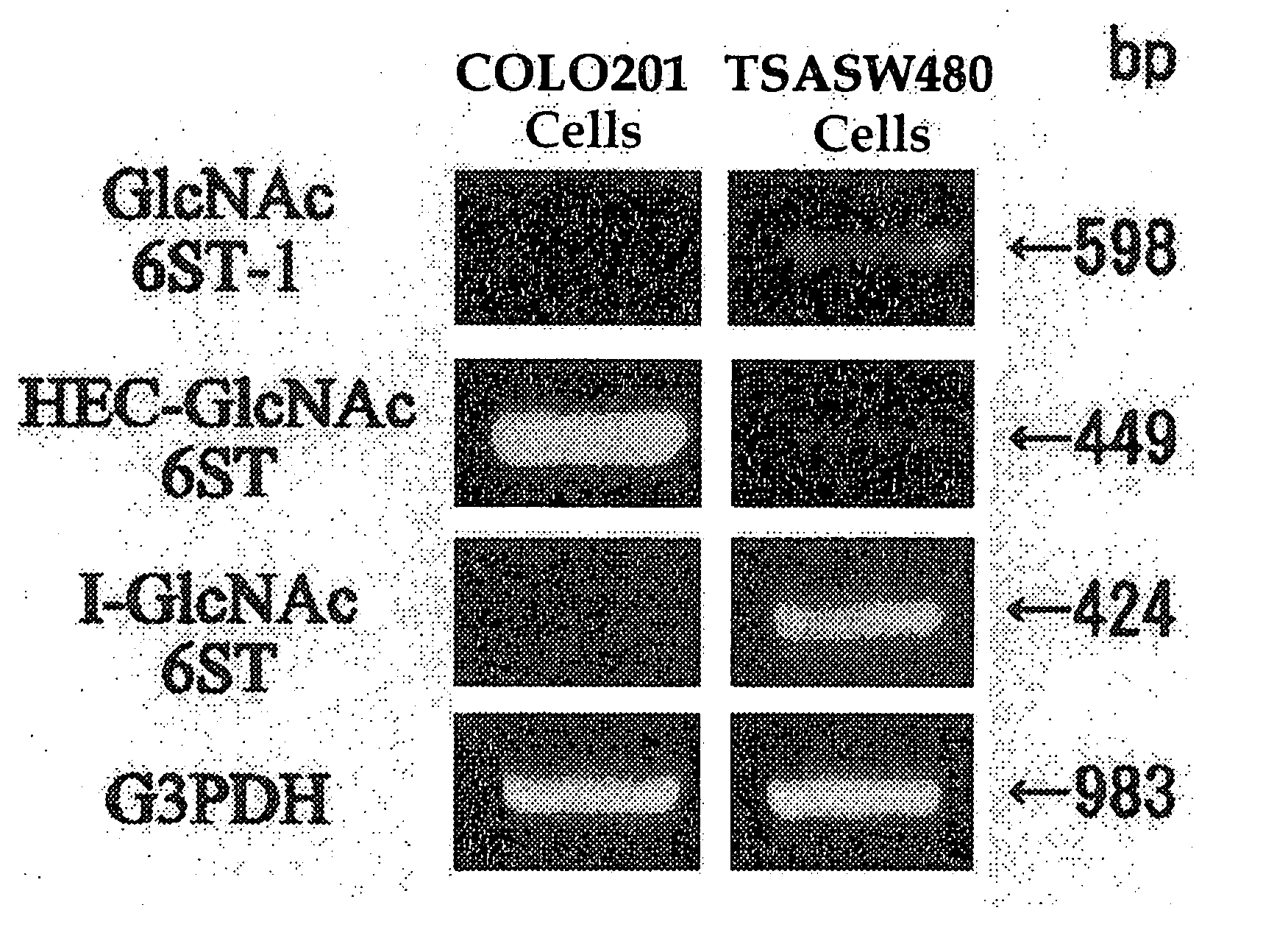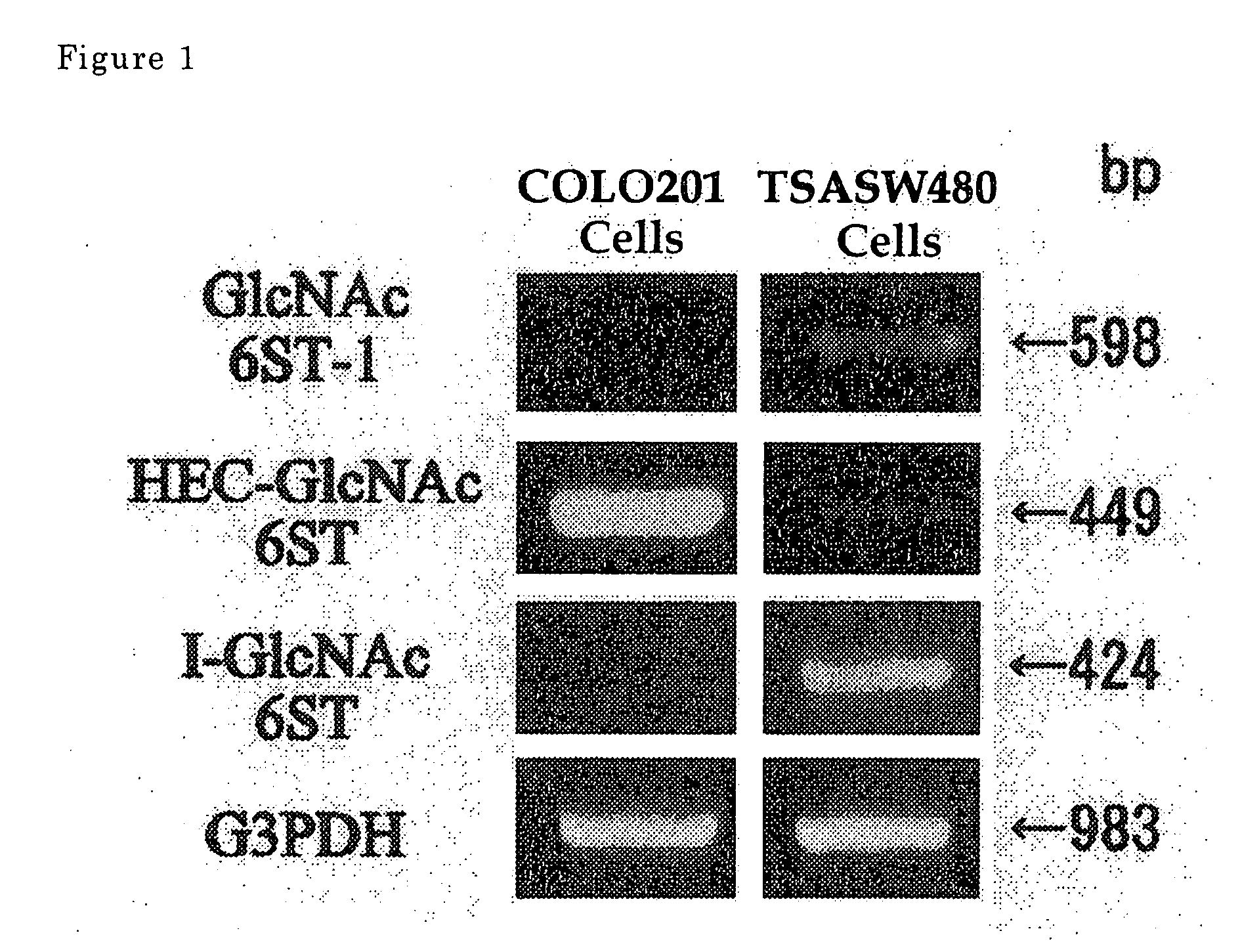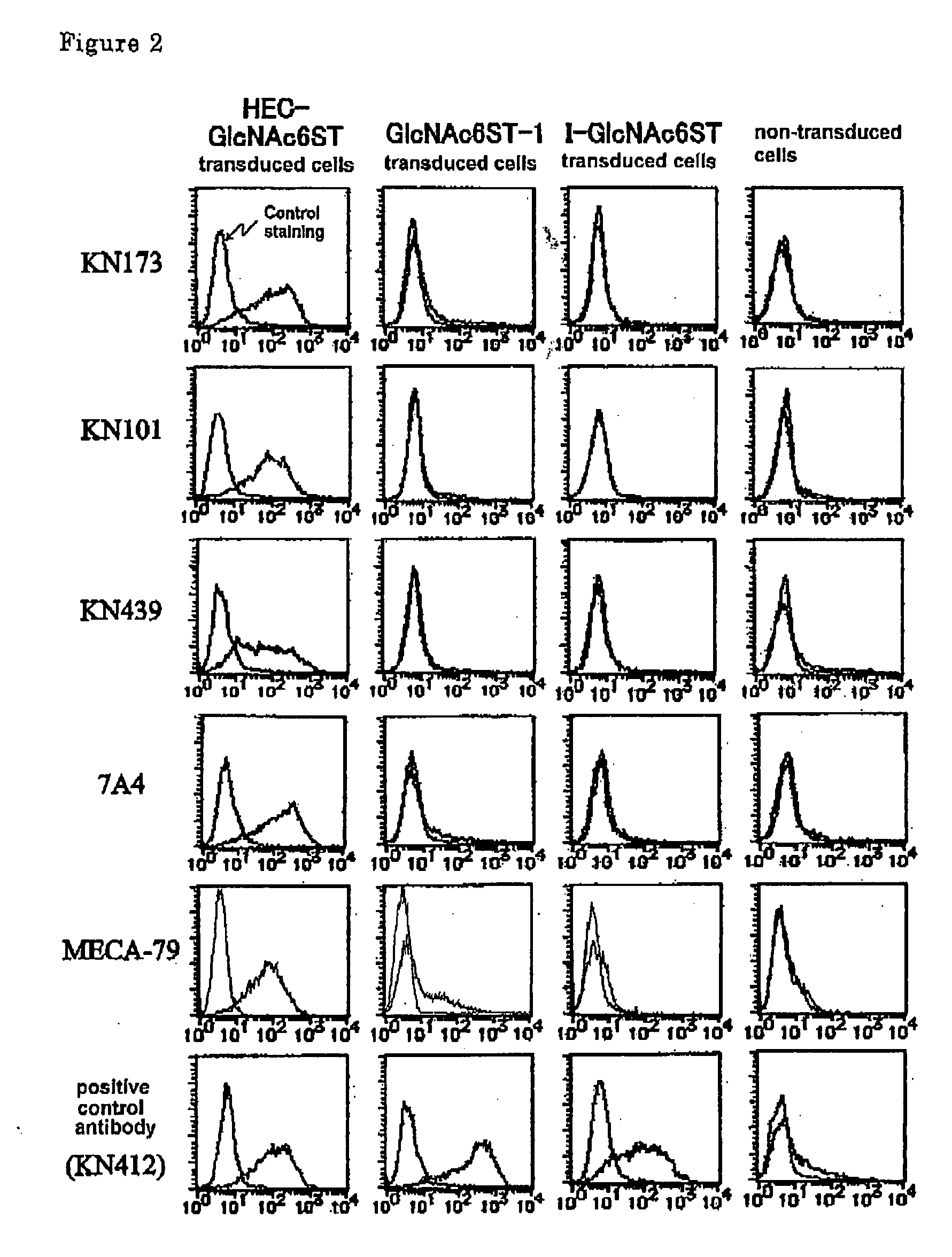Method For Examining Carcinoma And Adenoma
a carcinoma and adenoma technology, applied in the field of methods for examining carcinoma and adenoma, can solve the problems of insufficient positive rate of methods and inability to establish an actual system for diagnosis of carcinoma and adenoma
- Summary
- Abstract
- Description
- Claims
- Application Information
AI Technical Summary
Problems solved by technology
Method used
Image
Examples
reference example 1
[0042] Gene expression of GlcNAc-6-sulfotransferase isozymes was examined by RT-PCR on human-derived colorectal carcinoma cells (Colo201 cells) and on TSA-SW480 cells obtained by the treatment of normal colorectal epithelial cells (SW480 cells, obtained from Tohoku University, Cell Resource Center for Biomedical Research) with Tricostatin A.
[0043] In the RT-PCR analysis, PCR primers for detection of the expression of HEC-GlcNAc6ST gene (Genebank, AF131235) are synthetic oligonucleotides of SEQ ID NO. 1 for upper strand side and those of SEQ ID NO. 2 for lower strand side (Tm=59° C.), those for GlcNAc6ST-1 gene (Genebank, AB011451) are synthetic oligonucleotides of SEQ ID NO. 3 for upper strand side and those of SEQ ID NO. 4 for lower strand side (Tm=62° C.), and those for I-GlcNAc6ST gene (Genebank, AF176838) are synthetic oligonucleotides of SEQ ID NO. 5 for upper strand side and those of SEQ ID NO.6 for lower strand side (Tm=60° C.).
[0044] The results are shown in FIG. 1. It is ...
example 1
[0045] cDNA of HEC-GlcNAc6ST (Genebank, NM—005769), GlcNAc6ST-1 (Genebank, NM—004267) and I-GlcNAc6ST (Genebank, NM—012126) genes are transduced into human colorectal carcinoma cells (SW480 cells, obtained from Tohoku University, Cell Resource Center for Biomedical Research) together with drug resistant neo gene. After cloning by drug selection, said gene expression was confirmed by RT-PCR. The monitoring of gene expression was performed by regular detection of 6-sulfotransferase gene products during maintenance culturing and was used for examining stable gene expression.
[0046] A mouse was immunized by the use of said carcinoma cells by a conventional method. Then, monoclonal antibody, which reacts with those carcinoma cells transformed with GlcNAc-6-sulfotransferase gene, but does not react with those carcinoma cells transformed with other GlcNAc-6-sulfotransferase genes such as GlcNAc6ST-1 or I-GlcNAc6ST gene, was prepared. As the results, several antibodies such as KN173, KN101,...
example 2
[0051] 6-sulfated sugar residues in serum samples of various cancer patients were assayed by sandwich ELISA method by the use of antibody secreted from the clone 7A4 obtained in Example 1. First, the monoclonal antibody 7A4 secreted from the clone 7A4 is fixed in wells of a microplate. Second, serum samples of patients are reacted in the wells. Third, said biotin-labeled antibody is reacted in the wells. Forth, streptavidin-labeled Horse Radish Peroxidase is reacted in the wells. Fifth, the reactants are colored by the use of TMB substrate and finally the ratio of absorbance at 450 nm to control absorbance at 620 nm is measured to determine the amount of reactants after stopping the color development. Positive or negative is judged based on a cut-off line of average +2SD of normal people.
[0052] The results are shown in FIG. 3. The amount of said sulfated sugar residues are increased in various carcinoma cases such as breast, pancreatic, gall bladder, esophageal, gastric, hepatocell...
PUM
| Property | Measurement | Unit |
|---|---|---|
| Fraction | aaaaa | aaaaa |
| Fraction | aaaaa | aaaaa |
| Fraction | aaaaa | aaaaa |
Abstract
Description
Claims
Application Information
 Login to View More
Login to View More - R&D
- Intellectual Property
- Life Sciences
- Materials
- Tech Scout
- Unparalleled Data Quality
- Higher Quality Content
- 60% Fewer Hallucinations
Browse by: Latest US Patents, China's latest patents, Technical Efficacy Thesaurus, Application Domain, Technology Topic, Popular Technical Reports.
© 2025 PatSnap. All rights reserved.Legal|Privacy policy|Modern Slavery Act Transparency Statement|Sitemap|About US| Contact US: help@patsnap.com



